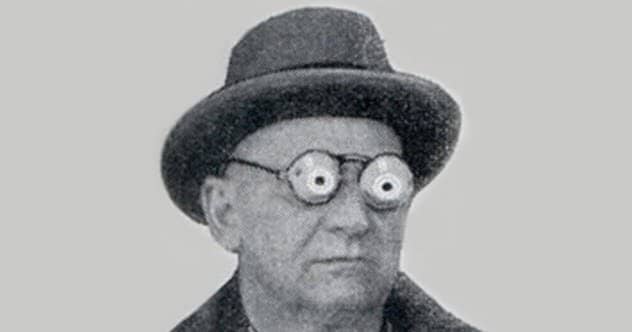Nobel prizes for the fields of Physics,Chemistry and Peace were announced recently. To celebrate the winners, we decided to list down some of the most bizarre inventions by the most celebrated scientists.
10. Swim Fins by Benjamin Franklin
Benjamin Franklin is one of the most revered inventors of the 18th century. His experiments with electricity are well documented, but very few people know that he was also a swimming champ. To improve his technique, he developed a set of wooden fins to be worn on hands. The fins were 25 centimetres (10 in) long and 15 centimetres (6 in) wide. They did not make their way to commercial production but Franklin claimed that these fins increased his speed significantly.
9. DaVinci’s Giant Crossbow
DaVinci had many crazy ideas, but most of them did not make it out of the drawing board. Some of his wackiest ideas included plans for a robotic knight, Perpetual Motion Machine, and even a Flying Machine. Out of all those ideas, the most practical was this giant crossbow and even Discovery Channel proved it in 2010 that it was plausible to build a working giant crossbow based on DaVinci’s designs presented in the 15th and 16th century.
8. The Teleautomaton Boat Nikola Tesla
Tesla was extremely fascinated with electricity and most of his work also lies in that domain. Apart from his work on electricity, he is also considered a pioneer in the field of radio technology. At a convention in 1898 at Madison Square Garden in New York, he unveiled his radio-controlled boat christened Teleautomaton boat. He wanted to showcase the work of his new patent titled “a method of and apparatus for controlling mechanism of moving vessels and vehicles.” The technology was very new and he certainly left the crowd flabbergasted by remotely controlling a small boat.
7. The Metal Detector by Alexander Graham Bell
Alexander Graham Bell is well-known as the inventor of the telephone. However, the ingenious inventor was also the creator of one of the earliest metal detectors. He started work on his invention after the President James Garfield was shot. Most of the physicians opined that a long thin device must be inserted to poke around inside the wound and find the bullet. The suggestion was flawed as it could spread the infection. Bell suggested the use of the electromagnetic field to detect the bullet. The electromagnetic field is disturbed by the metals. Bell’s detector made a clicking noise when brought near a metal and worked fine in the lab but started clicking all over the place as soon as it was brought near the president’s bed. Most historians now say that the reason Bell’s device didn’t work was the presence of metal coins in the mattress of James Garfield, this was relatively a new technology at the time and nobody took notice of it.
6. The Copier James Watt
Watt is well known for his steam engine, but the man who started the industrial revolution also invented a copier. His small portable machine was able to copy documents by pressing them onto a thin strip of paper. The design of all photocopiers was based on the same principle until the modern electronic machines were introduced.
5. Soda Water Joseph Priestley
Joseph Priestley is credited with discovering Oxygen along with other gases or “airs” as he termed them. His experiments with various elements led him to create Soda water. Priestly lived next to a brewery where he discovered a method of mixing carbon dioxide with water by suspending a bowl of water over a fermenting beer vat. He did not commercialise the drink. Later on, Johann Jacob Schweppe devised a commercially viable method to sell the drink and founded a company called Schweppes Company in 1783.
4. The Bouillon Cube Justus Von Liebig
Justus von Liebig is regarded as one of best chemists of the 19th century. An engineer named George Christian Giebert noticed that leather makers were only taking hides from the cows while wasting the meat. He contacted Liebig knowing that he had invented a method to process meat. Liebig soon started his company with the noble intentions of publicising the idea in hopes that someone would refine the process, reduce the cost, and make meat extract a viable alternative for feeding the poor.
3. The Life Table by Edmond Halley
Know about Halley’s comet? well, he is the one it is named after since he discovered its path. Alas, his work in actuarial science is quite forgotten. In 1693, he obtained the demographic data for the city of Breslau. The document contained all the deaths and births registered over the past year. Using this information Halley came up with a life table calculating the probability of death of each age group. Halley’s table became an essential part of calculating life annuities from then on.
2. The Talking Doll Thomas Edison
Thomas Edison is perhaps the greatest inventor on our list. Edison made a fortune from all of his inventions, and this doll came into being when he stuck his popular phonograph on a doll. But the dolls were a failure(apparently, nobody liked a creepy talking doll in 1890!) they only sold for a few weeks.
1. The Electric Piano Walther Nernst
Nernst won a Nobel in chemistry. However, in 1930 he teamed up with two companies, Bechstein and Siemens, to create something completely different—the Neo-Bechstein-Flugel, aka the first electric piano. His invention came when the general public was just warming to the idea of a radio. His invention also had a radio receiver and a built-in recorder. Surprisingly, in spite of all these features, it was still cheaper than the standard piano at the time. Who knew a little contribution to Rock and Roll was made by a Nobel Laureate Chemist?

